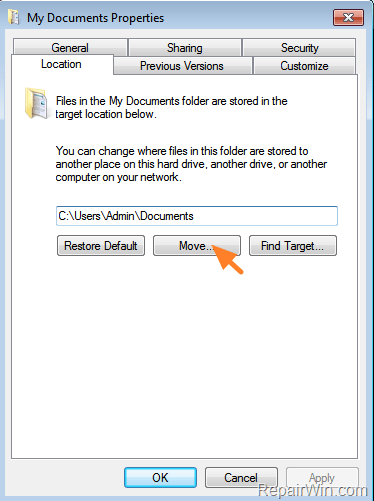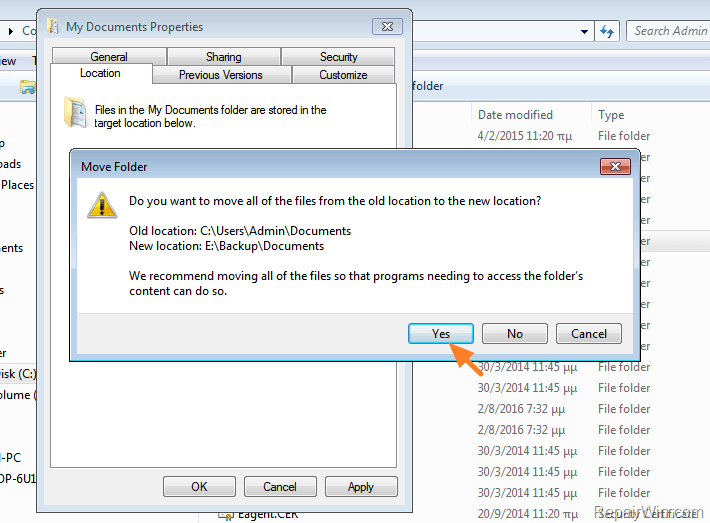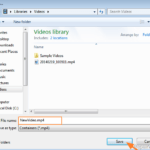The default location of a user profile in Windows 7 and later OS can be found in “C:Users” folder, which is located at the same partition (disk) as the operating system is (OS disk). But if your OS disk has not enough free space, then is better to change the default location of your personal folders (user files) to another drive, in case that you have an additional drive available on your system.
In this tutorial you can find detailed instructions on how you can move Documents, Desktop, Music or Videos folders to another location on your computer and make the new location as the default save location for new files.
- Related article: How to change Personal Folders Location using Registry.
How to Change Default Save Location / Move User Folders on Windows 10, 8, 7 and Vista.
– On a standard Windows installation, all the personal files for every user, are stored at “C:Users<USERNAME>” folder, under the following subfolders (Personal Folders):
* Note: The<USERNAME> variable represents the path of the user profile folder. (e.g. if you username is “Admin” then your user profile folder is: “C:UsersAdmin”)
Desktop –> C:Users<USERNAME>Desktop
My Documents – > C:Users<USERNAME>Documents
Downloads – > C:Users<USERNAME>Downloads
My Music – > C:Users<USERNAME>Music
My Pictures – > C:Users<USERNAME>Pictures
Videos – > C:Users<USERNAME>Videos
– If you want to move the contents from a personal folder (e.g. the “My Documents” folder) to another destination on your computer and to change the default save location:
1. Open Windows Explorer and expand the contents of the following folder:
- C:Users<USERNAME>
* Note: The<USERNAME> variable represents the path of your user profile folder. (e.g. if you username is “Admin” then navigate to “C:UsersAdmin” folder).

2. Right click on the personal folder that you want to change it’s location. (e.g. “My Documents”) and select Properties.
3. At Location tab, click the Move button.

4. Select the new folder destination and click Select folder.

5. Click OK twice to exit and then click Yes at the warning message.

You ‘re done! If you want to restore the default location then navigate to the new location you specified, and by following the same steps, click the “Restore Default” button.
That’s all! Did it work for you?
Please leave a comment in the comment section below or even better: like and share this blog post in the social networks to help spread the word about this solution.


